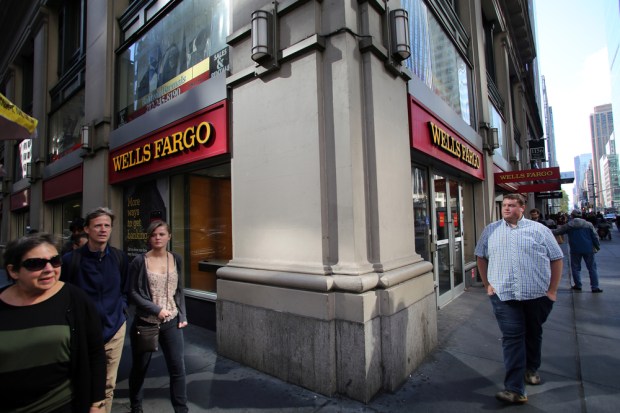Wells Fargo’s Earnings May Change With Potential $1B Penalty

As regulators seek to impose a $1 billion penalty on Wells Fargo over mortgage fees and car insurance, the bank said on Friday (April 13) that its first-quarter earnings are subject to change, The Financial Times reported.
“The CFPB [Consumer Financial Protection Bureau] and OCC [Office of the Comptroller of the Currency] have collectively offered to resolve for an aggregate of $1bn in civil money penalties,” the bank said. “At this time, we are unable to predict [the] final resolution of the CFPB/OCC matter and cannot reasonably estimate our related loss contingency.”
The $1 billion penalty would be far greater than the $185 million in restitution and fines the bank had to pay for a scandal involving staff who opened bank accounts without the knowledge of the bank’s customers. Following the disclosure of the potential billion-dollar penalty, shares fell 3.3 percent. Overall, the company’s stock was down about 16 percent this year, while the S&P 500 index declined 0.6 percent.
The news comes months after Wells Fargo announced the conclusion of an expanded inquiry into how many fake accounts were open on unwitting consumers and small businesses. The company said last summer that the number of fake accounts jumped to 3.5 million from its past estimate of 2.1 million. That increase in fake accounts was due to the bank’s use of a third party to analyze the scope of the scandal. The third party found 1.4 million new accounts were opened potentially without the blessing of its customers.
“The original account analysis reviewed 93.5 million current and former customer accounts opened in an approximately four-and-half-year time period — from May 2011 through mid-2015 — and identified approximately 2.1 million potentially unauthorized accounts,” Wells Fargo had said in a press release. “The expanded analysis reviewed more than 165 million retail banking accounts opened over a nearly eight-year period — from January 2009 through September 2016 — and identified a new total of approximately 3.5 million potentially unauthorized consumer and small business accounts.”
